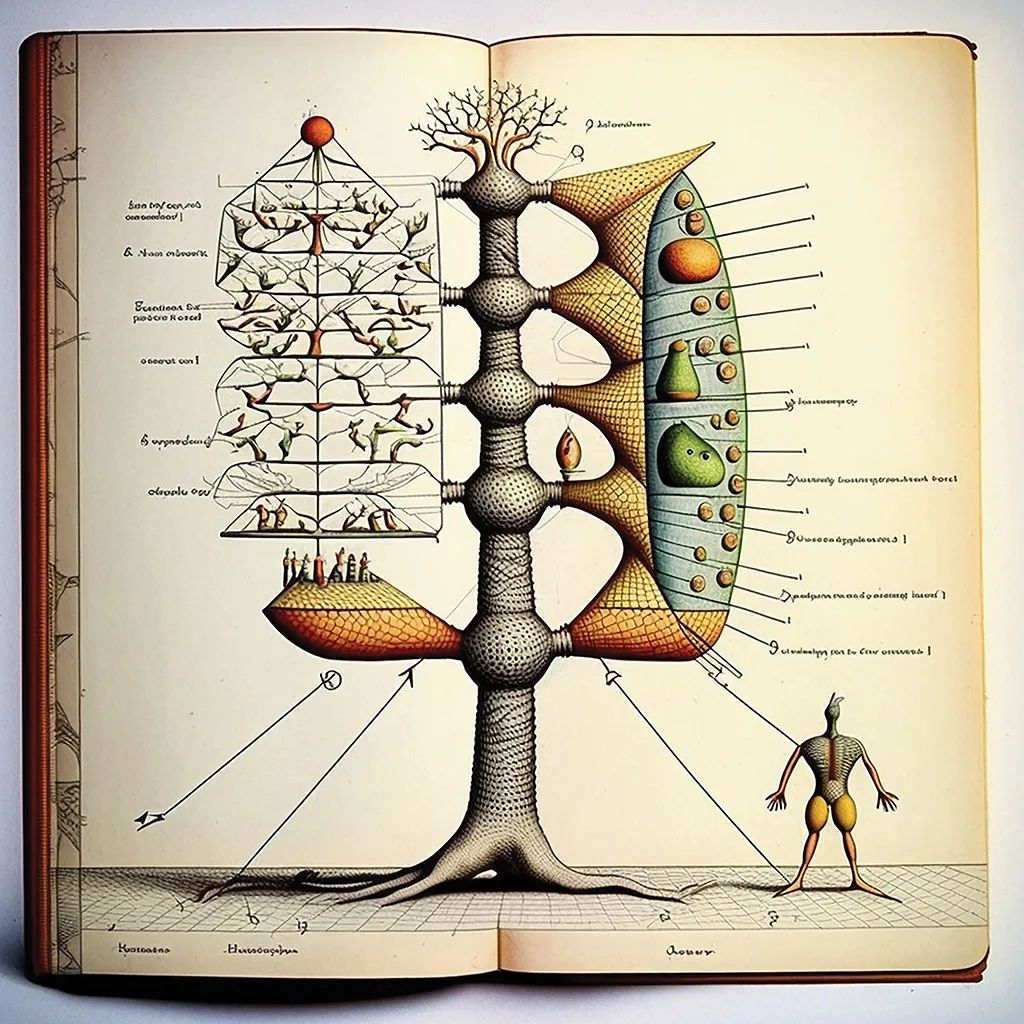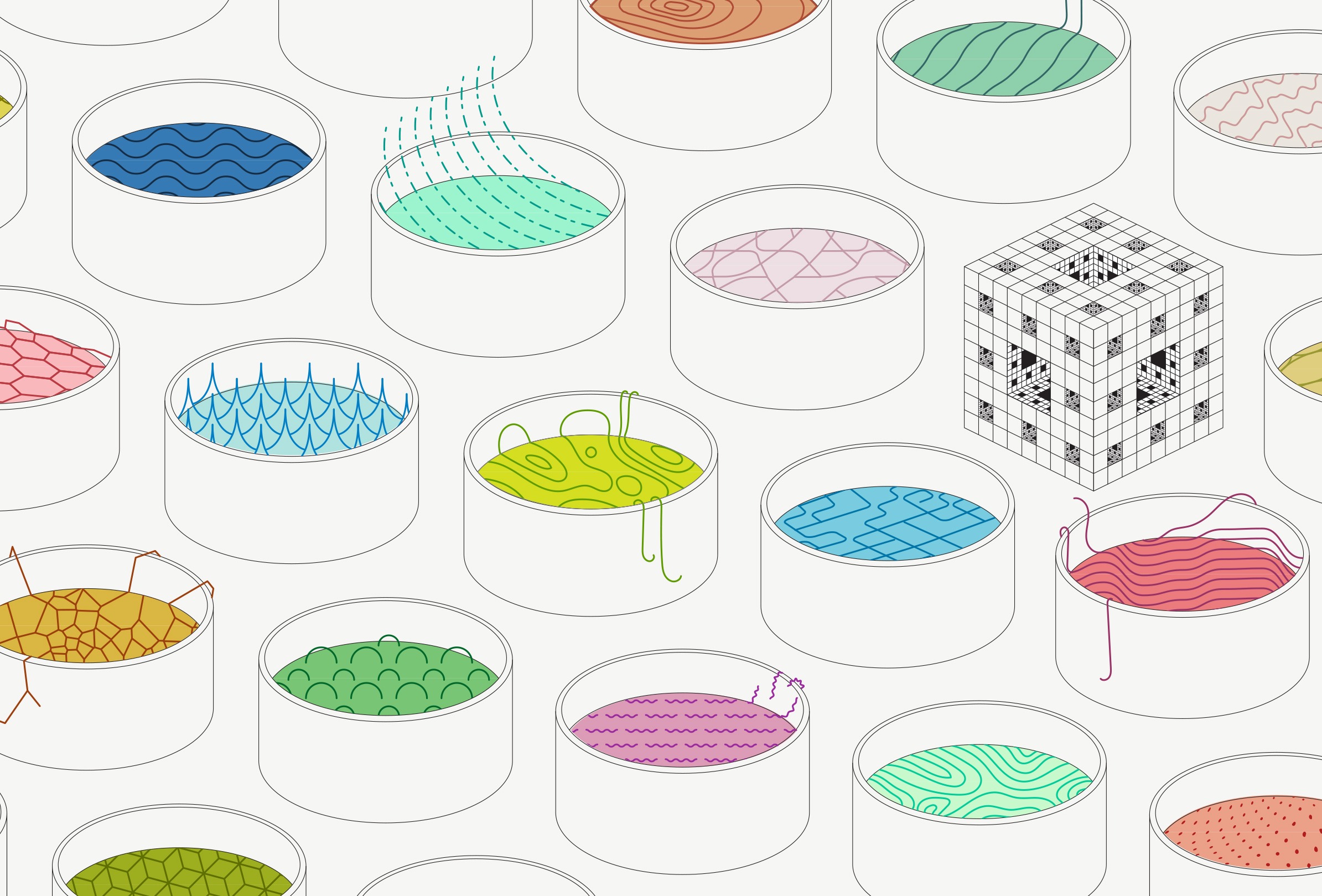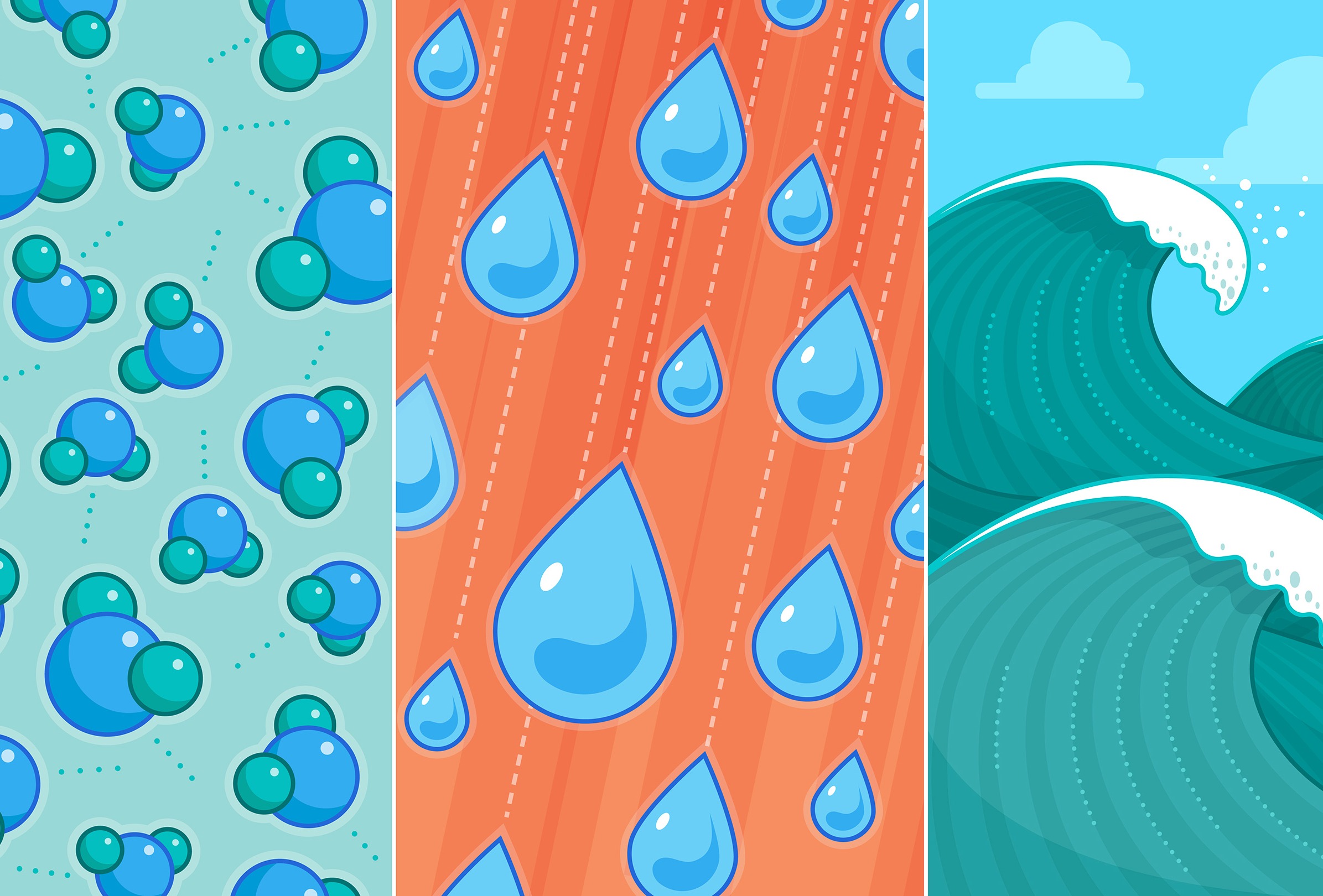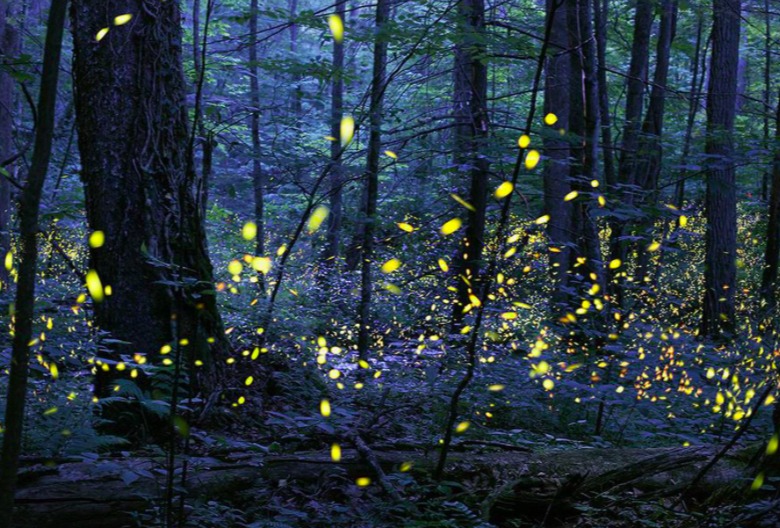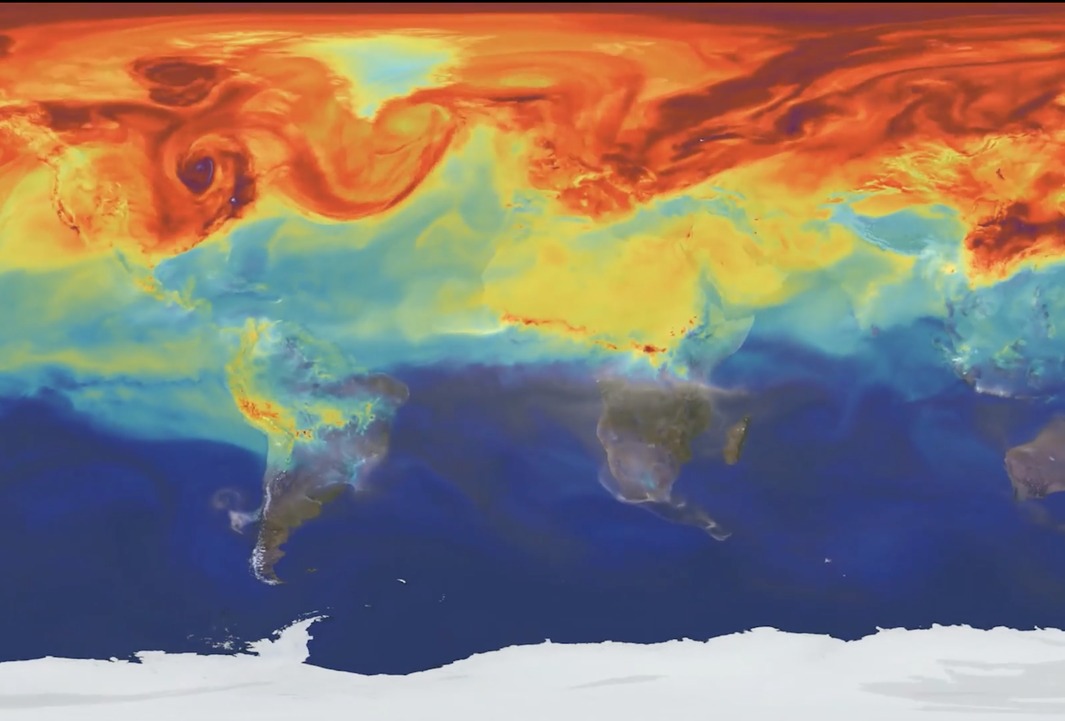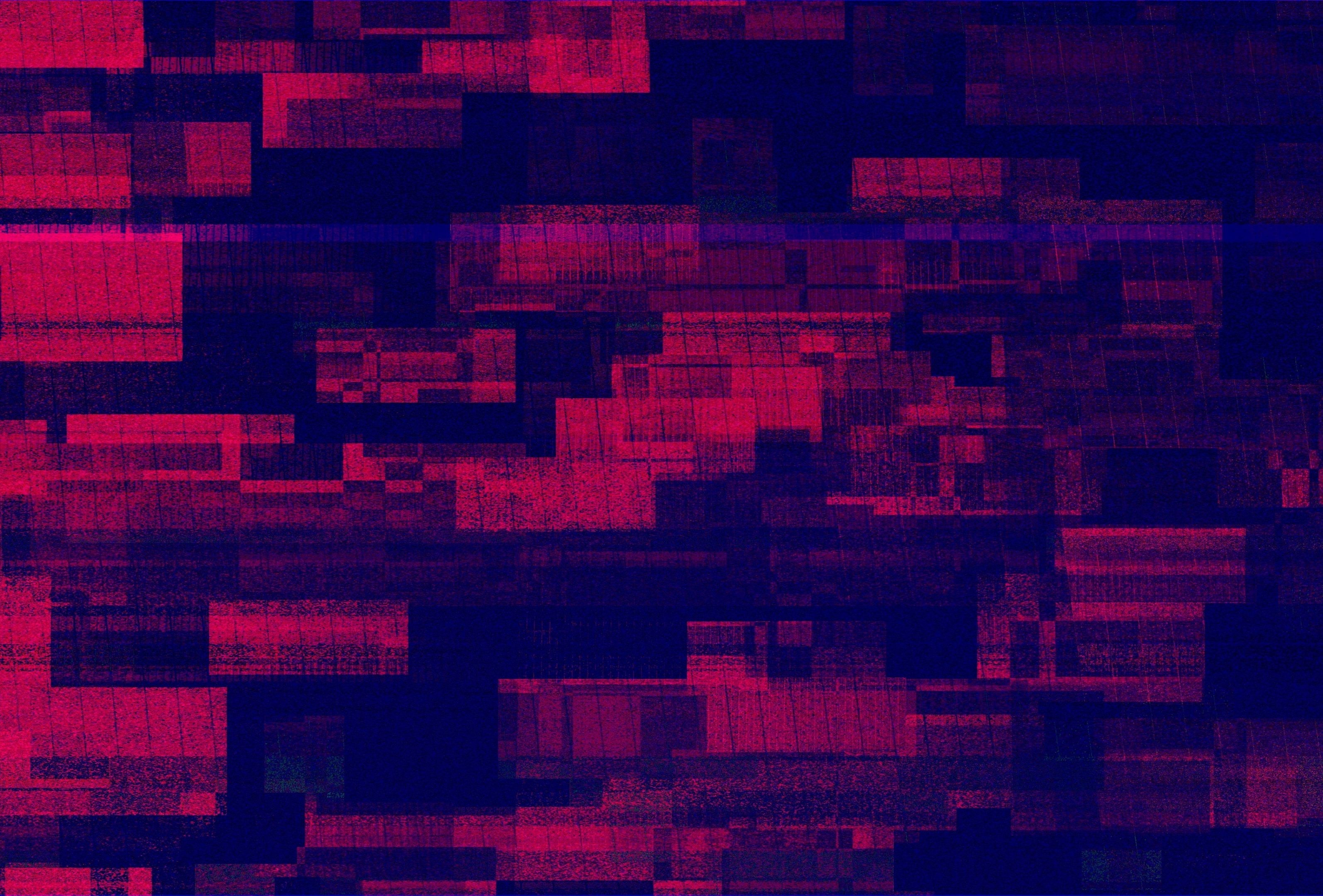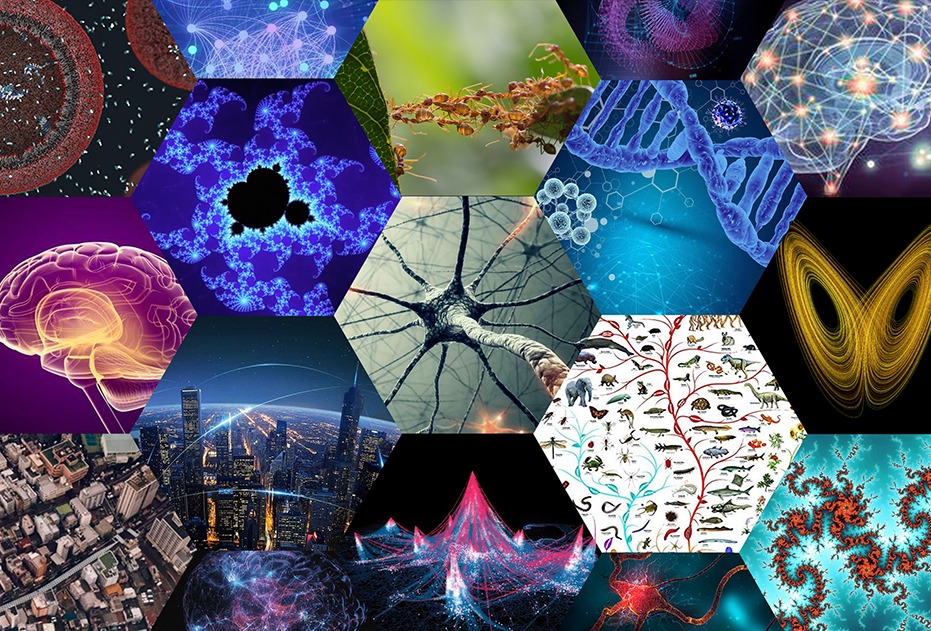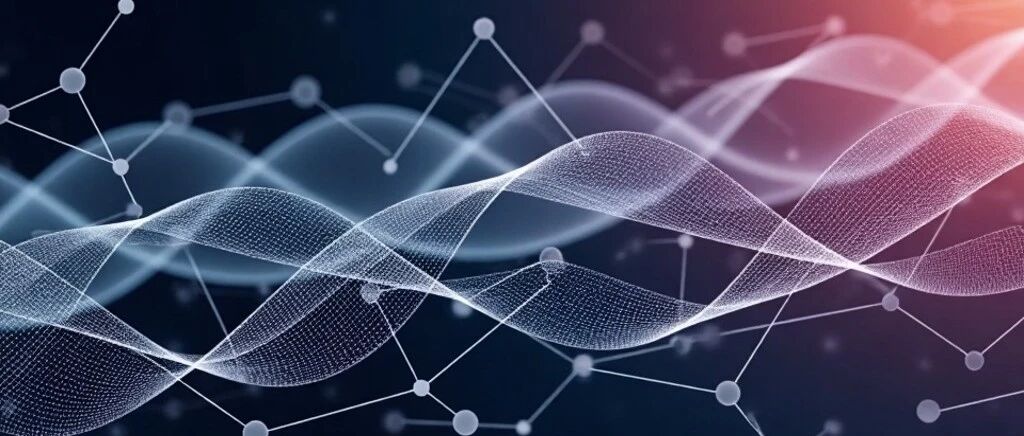对称性(Symmetry)是自然界从微观到宏观都普遍存在的结构,是诸多学科共有主题。在物理学中,对称性原则是牛顿运动定律、电磁学等基本理论的核心;在化学中,分子对称性决定其物理和化学性质;在生命科学中,对称性对生物形态、发育、功能、演化有重要意义。在一个具有对称性的系统中,可以对系统进行某种变换(例如旋转、平移或反射),而系统的基本性质不会改变。然而,当这种对称性被破坏时,这种变换会导致系统的性质发生改变。这就是在自然界同样普遍存在的对称性破缺。
The Royal Society 发表的特刊「生命与心智中的对称性和对称性破缺」在导言中指出,在许多情况下,对称性破缺可以导致新的宏观行为的涌现。例如在相变中,液体冷却成固体时的结晶。并且涌现现象可能伴随着对称性破缺。例如铁磁体的磁化伴随着旋转对称性的破缺。从对称性破缺的视角深入认识涌现机制,对于理解复杂系统,尤其是生命、心智、组织、社会等“活的”复杂系统,具有重要的意义。本文翻译自特刊导言,集智俱乐部此前翻译了特刊中的系列文章,欢迎感兴趣的朋友深入阅读,详情见文末。
关键词:复杂系统,对称性破缺,涌现,规范场论,自由能原理,人工智能
Adam Safron,Dalton A. R. Sakthivadivel,Zahra Sheikhbahaee,Magnus Bein,Adeel Razi,Michael Levin | 作者
汪显意 | 译者
朱欣怡、刘培源 | 审校

论文题目:
Making and breaking symmetries in mind and life
论文链接:
https://royalsocietypublishing.org/doi/10.1098/rsfs.2023.0015
对称性在自然界中随处可见,是几乎所有科学领域的共同主题,并且对于我们理解周围世界的结构尤为重要[1,2]。对称性和不变性(对称性即在旋转、平移等变换条件下保持属性不变)通常是对观察进行描述的首要准则,对称性视角可以带来“令人满意”的解释,又可能有助于理解事物的规律[3-5]。伴随着这种解释的美感,让人联想到我们对智能的理解,即有效预测(或压缩)数据的能力[6,7];事实上,识别和建立对称性可以提供对现实情况的优雅描述。对称性的研究是数学和物理学的基础,以至于人们可能会问:它还在哪里有用?这就引出了以下问题:对于对称性和对称性破缺的研究,能为生命和心智的研究提供什么贡献?
在这个主题多样的特刊中,我们在不同尺度上(从生物物理系统的涌现动力学及其潜在机制,到个体发育和物种演化过程中的适应性形成过程)探索了对称性在复杂适应系统(complex adaptive systems)中的作用。通过这些理论和实证探索,我们希望证明研究对称性可以阐明生命和智能系统的基本特性。为此,我们考虑了大量关于对称性和非对称性的观点,探索看似完全不同的现象之间,可能有多大的交集。
规范场论(gauge theory)是对称性相关概念的最重要的应用之一[8]。每当一个物理理论存在一个冗余量(即局部改变该量不会改变系统动力学,也称作“参考系”或“标准”),我们可以将该量理解为记录在规范场中的一种抽象对称性(abstract symmetry)[9-11]。规范场的形变可看作“虚拟的”力。这些虚拟力记录了系统与规范场的相互作用,来恢复冗余量的局部对称性。这些冗余量(即参考系)在动力学上是不变量。规范场论是对物理系统进行建模的一般方法。成功的实例包括广义相对论中将引力处理为时空曲率,以及电磁场中引力和斥力的模型。这些理论影响深远,以至于在描述这些虚拟力时,可能会忽略“虚拟”一词,因为可能没有其他类型的力存在[12]。
过去,早有学者将规范场论的观点应用于生物物理学,特别是在大脑作为目标导向系统(goal-seeking systems)时,此时大脑的工作原则是分层信息处理(hierarchical information processing)和预测误差最小化(prediction-error minimization)。自由能原理和主动推理(FEP-AIF,the free energy principle and active inference)的理论观点认为[9,13-15]:神经系统的吸引状态(attracting states)被理解为包含各种预测。这些预测的持续实现可以被视为目标状态的保存。预测能否持续实现取决于控制这些动力学的规范场施加的特定对称性。
对称性的重要性深入到大脑功能的各个方面:心智因果性(mental causality)可以被理解为一种超越神经动力学的“虚拟力”(特别是在感知和行动方面)[16],甚至有人提出了“对称性情感理论(symmetry theory of valence)”。该理论认为,快乐和痛苦可以被视作心智系统以某种适当方式、以不同程度,过渡到更加对称或更少对称的状态[17-19]。在本特刊中,诸如“在哪些方面,对称性对于神经系统功能最重要?(例如连接组静息态网络所对应的调和函数)”[20]以及“能否通过对不同形式的音乐[21]或不同分形结构的视觉刺激[22]或与致幻剂相关的迷幻状态[23,24]的反应,来证明对称性原则?”等问题,被提出并获得一定程度的回答。
有趣的是,在心智因果性中,对称性可能在“对称性破缺”这一个独特方面发挥作用。不可逆过程和时间之箭[25,26],对于建立认知工作循环可能是必须的,其中涉及不同程度的能量消耗和各种形式的心理“努力”或“心流”[27-29]。这些特殊的时间对称性(或非对称性),在系统服从细致平衡(detailed balance)原则时[27,30]和细致平衡破坏时发挥作用。考虑到许多有趣的生物系统不满足细致平衡特性,并且可以用规范场论[31]来描述细致平衡的破坏(特别是非零循环的存在),因此这是寻找对称性过程中[32]一个有趣的方向。
对称性作为感知不变量和归纳偏置的用处,也在机器学习中得到了确认[33,34]。这些受物理学启发的算法能否揭示生物系统非凡智能背后的计算原理?
人类感知和学习中的对称性功能,是否有助于激发人工智能的进步?自然守恒定律的研究在多大程度上可以为机器学习提供更强大和更可解释的方法[35,36]?事实上,当我们谈到智能体具备 “系统2”认知(即通过抽象化和概念化获得认知理解[37,38])的前提条件时,甚或当我们自身产生稳定感知的能力时,是否最好把这些现象的实质理解为各种信息的对称性?换个角度,我们可能会问:通过预测编码,前文所说的对称性结构具备怎样程度的“优势”偏好,其中对称结构可能更容易预测或压缩,而有效的预测误差最小化或有效的压缩恰恰构成了生物情感体验的基础[39-41]?
基于生命系统对称性偏好与预测编码的关系[42],我们相信对称性原则适用于形态发生(morphogenesis)和自组织(self-organization)。这可能提供了一种方法来理解在生物体中观察到的各种作为复杂适应系统中不寻常的因果关系。甚至可以让我们联想到与生命现象的本质有关的前理论直觉(pre-theoretic intuitions),其中“活力(elan vital)”和“生命力(life force)”的概念部分源于抽象形式主义[43,44]。值得注意的是,在发育过程中,特定形式的可靠创造(和再生)已被描述为“形态发生场(morphogenetic fields)”[45]。一些模型表明,生物物理系统构建和保存其表型的能力可以被理解为一种在信息几何维度的力场控制,生成特定的表型形式可看做一种吸引状态[13]。规范场论不仅可以用于理解如何支配个体发育,还可以将系统发育理解为自由能最小化的过程。特别是当发育本身被理解为一种特殊的进化时[46-50],这一想法很有吸引力。
这一特刊的灵感也来自于对称性在决定生物系统的功能特性方面所起的各种作用。而这方面的待探索的问题也有很多。
在生物系统中,偏侧性的对称性破缺是如何发生的[51–54]?分子手性或方向不对称性(几乎所有细胞都存在)是如何放大为全身不对称性,比如后生生物中器官位置相对于中线的不对称性?神经系统组织中的不对称性的功能意义又是什么[55-65],它们是否能反映生物体适应性的缺乏[66,67]?(参看:《手性对称性破缺的起源:生命最初为何偏好一种手性?》)
提出如此宽泛的问题,是为了寻找在对称性概念用于描述自然界的不同方式中的不变性。虽然本特刊的研究工作只解决了其中的部分问题,但是这些文章为更深入地思考生命的起源、意识甚至时间的本质等问题奠定了基础。
本特刊中,David Krakauer [68]在文章“Symmetry-simplicity, broken symmetry-complexity”中,给出对对称性破缺的精彩介绍。他描述了当物理对称性被打破,并且在选定的基态下做功并存储自适应信息时,复杂性现象是如何成为可能的。在纪念菲利普·安德森(Philip Anderson)的开创性文章“More is different”发表50周年之际,Krakauer描述了涌现(emergence)、阻挫随机函数(frustrated random functions)、自主性(autonomy)和广义刚性(generalized rigidity)四原则是如何表征复杂性的本质的。(参看:《安德森四原则:从对称性破缺到复杂性涌现》)
其他各篇文章分别呈现了与复杂自适应系统相关的对称性或不对称性的有趣观点。我们相信,对这类系统的研究,包括21世纪物理学中许多最有趣的问题——从软物质和活性物质,到生命和智能系统,再到神经动力学和意识——都具有出乎意料的丰富对称性。虽然并非所有特刊文章都从“自由能原理”衍生而来,但我们仍相信“自由能原理”提供了一条贯穿整个特刊的金线,与普遍应用于复杂系统领域的“对称性原则”相辅相成并深刻交织。然而,无论我们提问和回答这些问题的具体形式如何,有一件事是明确的:对于对称性的探索富有成效,很可能会在这些领域确立一个指导原则,就像它在数学和物理的其他领域的发展历史一样。
1. Gross DJ. 1996 The role of symmetry in fundamental physics. Proc. Natl Acad. Sci. USA 93, 14 256–14 259. (doi:10.1073/pnas.93.25.14256)
2. Atiyah M, Dijkgraaf R, Hitchin N. 2010 Geometry and physics. Phil. Trans. R. Soc. A 368, 913–926. (doi:10.1098/rsta.2009.0227)
3. Gopnik A. 1998 Explanation as orgasm. Minds Mach. 8, 101–118. (doi:10.1023/A:1008290415597)
4. Oh Y, Chesebrough C, Erickson B, Zhang F, Kounios J. 2020 An insight-related neural reward signal. Neuroimage 214, 116757. (doi:10.1016/j. neuroimage.2020.116757)
5. Safron A, Çatal O, Verbelen T. 2022 Generalized simultaneous localization and mapping (G-SLAM) as unification framework for natural and artificial intelligences: towards reverse engineering the hippocampal/entorhinal system and principles of high-level cognition. Front. Syst. Neurosci. 16, 787659. (doi:10.3389/fnsys.2022.787659)
6. Safron A. 2023 AIXI, FEP-AI, and integrated world models: towards a unified understanding of intelligence and consciousness. In Active inference (ed. CL Buckley et al.), pp. 251–273. Cham, Switzerland: Springer. (doi:10.1007/978-3-03128719-0_18)
7. Schmidhuber J. 2010 Formal theory of creativity, fun, and intrinsic motivation (1990–2010). IEEE Trans. Auton. Ment. Dev. 2, 230–247. (doi:10.1109/ TAMD.2010.2056368)
8. Bomark NE. 2020 Teaching gauge theory to first year students. (https://arxiv.org/abs/2009. 02162)
9. Fagerholm ED, Foulkes WM, Gallero-Salas Y, Helmchen F, Friston KJ, Moran RJ, Leech R. 2020 Conservation laws by virtue of scale symmetries in neural systems. PLoS Comput. Biol. 16, e1007865. (doi:10.1371/journal.pcbi.1007865)
10. Maldacena J. 2015 The symmetry and simplicity of the laws of physics and the Higgs boson. Eur. J. Phys. 37, 015802. (doi:10.1088/0143-0807/ 37/1/015802)
11. Rovelli C. 2020 Gauge is more than mathematical redundancy. In One hundred years of gauge theory: past, present and future perspectives (eds S De Bianchi, C Kiefer), pp. 107–110. Cham, Switzerland: Springer International Publishing.
12. Carroll S. 2016 The big picture: on the origins of life, meaning, and the universe itself. New York, NY: Penguin.
13. Sengupta B, Tozzi A, Cooray GK, Douglas PK, Friston KJ. 2016 Towards a neuronal gauge theory. PLoS Biol. 14, e1002400. (doi:10.1371/journal.pbio. 1002400)
14. Friston KJ. 2010 The free-energy principle: a unified brain theory? Nat. Rev. Neurosci. 11, 127–138. (doi:10.1038/nrn2787)
15. Tozzi A, Sengupta B, Peters JF, Friston KJ. 2017 Gauge fields in the central nervous system. In The physics of the mind and brain disorders: integrated neural circuits supporting the emergence of mind (eds I Opris, MF Casanova), pp. 193–212. Cham, Switzerland: Springer International Publishing.
16. Safron A. 2021 The radically embodied conscious cybernetic Bayesian brain: from free energy to free will and back again. Entropy 23, 6. (doi:10.3390/ e23060783)
17. Johnson ME. 2017 Principia qualia: volume I: framework & valence, 1st edn. Scotts Valley, CA: CreateSpace Independent Publishing Platform.
18. Joffily M, Coricelli G. 2013 Emotional valence and the free-energy principle. PLoS Comput. Biol. 9, e1003094. (doi:10.1371/journal.pcbi. 1003094)
19. Hesp C, Smith R, Allen M, Friston K, Ramstead M. 2021 Deeply felt affect: the emergence of valence in deep active inference. Neural Comput. 33, 398–446. (doi:10.1162/neco_a_01341)
20. Atasoy S, Donnelly I, Pearson J. 2016 Human brain networks function in connectome-specific harmonic waves. Nat. Commun. 7, 10340. (doi:10.1038/ ncomms10340)
21. Atasoy S, Roseman L, Kaelen M, Kringelbach ML, Deco G, Carhart-Harris RL. 2017 Connectomeharmonic decomposition of human brain activity reveals dynamical repertoire re-organization under LSD. Sci. Rep. 7, 17661. (doi:10.1038/s41598-01717546-0)
22. Robles KE, Liaw NA, Taylor RP, Baldwin DA, Sereno ME. 2020 A shared fractal aesthetic across development. Human. Soc. Sci. Commun. 7, 158. (doi:10.1057/s41599-020-00648-y)
23. Bressloff PC, Cowan JD, Golubitsky M, Thomas PJ, Wiener MC. 2002 What geometric visual hallucinations tell us about the visual cortex. Neural Comput. 14, 473–491. (doi:10.1162/0899766023 17250861)
24. Varley TF, Carhart-Harris R, Roseman L, Menon DK, Stamatakis EA. 2020 Serotonergic psychedelics LSD & psilocybin increase the fractal dimension of cortical brain activity in spatial and temporal domains. Neuroimage 220, 117049. (doi:10.1016/j. neuroimage.2020.117049)
25. Smith R. 2014 Do brains have an arrow of time? Phil. Sci. 81, 265–275. (doi:10.1086/675644) 6 royalsocietypublishing.org/journal/rsfs Interface Focus 13: 20230015 Downloaded from https://royalsocietypublishing.org/ on 27 April 2023
26. Fry RL. 2017 Physical intelligence and thermodynamic computing. Entropy 19, 3. (doi:10. 3390/e19030107)
27. Lynn CW, Cornblath EJ, Papadopoulos L, Bertolero MA, Bassett DS. 2021 Broken detailed balance and entropy production in the human brain. Proc. Natl Acad. Sci. USA 118, e2109889118. (doi:10.1073/ pnas.2109889118)
28. Tardiff N, Medaglia JD, Bassett DS, Thompson-Schill SL. 2021 The modulation of brain network integration and arousal during exploration. Neuroimage 240, 118369. (doi:10.1016/j. neuroimage.2021.118369)
29. Csíkszentmihályi M. 1991 Flow. New York, NY: Harper Collins.
30. Wang J, Xu L, Wang E. 2008 Potential landscape and flux framework of nonequilibrium networks: robustness, dissipation, and coherence of biochemical oscillations. Proc. Natl Acad. Sci. USA 105, 12 271–12 276. (doi:10.1073/pnas. 0800579105)
31. Polettini M. 2012 Nonequilibrium thermodynamics as a gauge theory. EPL 97, 30003. (doi:10.1209/ 0295-5075/97/30003)
32. Friston KJ, Fagerholm ED, Zarghami TS, Parr T, Hipólito I, Magrou L, Razi A. 2021 Parcels and particles: Markov blankets in the brain. Network Neurosci. 5, 211–251. (doi:10.1162/netn_a_00175)
33. Cohen TS, Weiler M, Kicanaoglu B, Welling M. 2019 Gauge equivariant convolutional networks and the icosahedral CNN. (http://arxiv.org/abs/1902.04615)
34. Liu Z, Chen Y, Du Y, Tegmark M. 2021 Physicsaugmented learning: a new paradigm beyond physics-informed learning. (https://arxiv.org/abs/ 2109.13901)
35. Liu Z, Tegmark M. 2021 Machine learning conservation laws from trajectories. Phys. Rev. Lett. 126, 180604. (doi:10.1103/PhysRevLett.126.180604)
36. Cranmer M, Sanchez-Gonzalez A, Battaglia P, Xu R, Cranmer K, Spergel D, Ho S. 2020 Discovering symbolic models from deep learning with inductive biases. (http://arxiv.org/abs/2006.11287)
37. Kahneman D. 2011 Thinking, fast and slow, 1st edn. New York, NY: Farrar, Straus and Giroux.
38. Bengio Y. 2017 The consciousness prior. (http:// arxiv.org/abs/1709.08568)
39. Dresp-Langley B, Wandeto JM. 2021 Human symmetry uncertainty detected by a self-organizing neural network map. Symmetry 13, 299. (doi:10. 3390/sym13020299)
40. Renoult JP, Bovet J, Raymond M. 2016 Beauty is in the efficient coding of the beholder. R. Soc. Open Sci. 3, 160027. (doi:10.1098/rsos.160027)
41. Schmidhuber J. 2007 Simple algorithmic principles of discovery, subjective beauty, selective attention, curiosity & creativity. (http://arxiv.org/abs/0709. 0674)
42. Fields C, Levin M. 2020 Scale-free biology: integrating evolutionary and developmental thinking. Bioessays 42, 1900228. (doi:10.1002/bies. 201900228)
43. Friston KJ, Wiese W, Hobson JA. 2020 Sentience and the origins of consciousness: from Cartesian duality to Markovian monism. Entropy 22, 5. (doi:10.3390/ e22050516)
44. 44. Koch C. 2019 The feeling of life itself: why consciousness is widespread but can’t be computed. Cambridge, MA: MIT Press.
45. Jaeger J, Monk N. 2021 Dynamical modules in metabolism, cell and developmental biology. Interface Focus 11, 20210011. (doi:10.1098/rsfs. 2021.0011)
46. Campbell JO. 2016 Universal Darwinism as a process of Bayesian inference. Front. Syst. Neurosci. 10, 49. (doi:10.3389/fnsys.2016.00049)
47. Kaila V, Annila A. 2008 Natural selection for least action. Proc. R. Soc. A 464, 3055–3070. (doi:10. 1098/rspa.2008.0178)
48. Safron A. 2019 Multilevel evolutionary developmental optimization (MEDO): a theoretical framework for understanding preferences and selection dynamics. (http://arxiv.org/abs/1910. 13443)
49. Stewart I, Elmhirst T, Cohen J. 2003 Symmetrybreaking as an origin of species. In Bifurcation, symmetry and patterns (eds J Buescu, SBSD Castro, AP da Silva Dias, IS Labouriau), pp. 3–54. Basel, Switzerland: Birkhäuser.
50. Friston K, Friedman DA, Constant A, Knight VB, Parr T, Campbell JO. 2023 A variational synthesis of evolutionary and developmental dynamics. (https:// arxiv.org/abs/2303.04898)
51. Larsson M. 2017 Did heart asymmetry play a role in the evolution of human handedness? J. Cult. Cogn. Sci. 1,65–76. (doi:10.1007/s41809-017-0009-z)
52. Levin M. 2005 Left–right asymmetry in embryonic development: a comprehensive review. Mech. Dev. 122,3–25. (doi:10.1016/j.mod.2004.08.006)
53. Levin M, Johnson RL, Sterna CD, Kuehn M, Tabin C. 1995 A molecular pathway determining left-right asymmetry in chick embryogenesis. Cell 82, 803–814. (doi:10.1016/0092-8674(95)90477-8)
54. Levin M, Thorlin T, Robinson KR, Nogi T, Mercola M. 2002 Asymmetries in H+/K+-ATPase and cell membrane potentials comprise a very early step in left-right patterning. Cell 111,77–89. (doi:10.1016/ S0092-8674(02)00939-X)
55. Beeman MJ, Bowden EM. 2000 The right hemisphere maintains solution-related activation for yet-to-be-solved problems. Mem. Cognit. 28, 1231–1241. (doi:10.3758/BF03211823)
56. Bowden EM, Jung-Beeman M. 2003 Aha! Insight experience correlates with solution activation in the right hemisphere. Psychon. Bull. Rev. 10, 730–737. (doi:10.3758/BF03196539)
57. Brookshire G, Casasanto D. 2012 Motivation and motor control: hemispheric specialization for approach motivation reverses with handedness. PLoS ONE 7, e36036. (doi:10.1371/journal.pone. 0036036)
58. Craig AD. 2014 How do you feel? An interoceptive moment with your neurobiological self, illustrated edn. Princeton, NJ: Princeton University Press.
59. Davidson RJ, Ekman P, Saron CD, Senulis JA, Friesen WV. 1990 Approach-withdrawal and cerebral asymmetry: emotional expression and brain physiology. I. J. Pers. Soc. Psychol. 58, 330–341. (doi:10.1037/0022-3514.58.2.330)
60. Gazzaniga MS. 2018 The consciousness instinct: unraveling the mystery of how the brain makes the mind. New York, NY: Farrar, Straus and Giroux.
61. Kaur A, Chinnadurai V, Chaujar R. 2020 Microstatesbased resting frontal alpha asymmetry approach for understanding affect and approach/withdrawal behavior. Sci. Rep. 10, 1. (doi:10.1038/s41598-02061119-7)
62. McGilchrist I. 2019 The master and his emissary: the divided brain and the making of the western world. New Haven, CT: Yale University Press.
63. Pinto Y, Neville DA, Otten M, Corballis PM, Lamme VA, de Haan EH, Foschi N, Fabri M. 2017 Split brain: divided perception but undivided consciousness. Brain 140, 1231–1237. (doi:10.1093/brain/awx235)
64. Sasai S, Boly M, Mensen A, Tononi G. 2016 Functional split brain in a driving/listening paradigm. Proc. Natl Acad. Sci. USA 113,14 444–14 449. (doi:10.1073/pnas.1613200113)
65. Tommasi L. 2009 Mechanisms and functions of brain and behavioural asymmetries. Phil. Trans. R. Soc. B 364, 855–859. (doi:10.1098/rstb. 2008.0293)
66. Lens L, Van Dongen S, Kark S, Matthysen E. 2002 Fluctuating asymmetry as an indicator of fitness: can we bridge the gap between studies? Biol. Rev. Camb. Philos. Soc. 77,27–38. (doi:10.1017/ S1464793101005796)
67. Wiberg A et al. 2019 Handedness, language areas and neuropsychiatric diseases: insights from brain imaging and genetics. Brain 142, 2938–2947. (doi:10.1093/brain/awz257)
68. Krakauer DC. 2023 Symmetry–simplicity, broken symmetry–complexity. Interface Focus 13, 20220075. (doi:10.1098/rsfs.2022.0075)
本文翻译自 The Royal Society 特刊「生命与心智中的对称性和对称性破缺」(Making and breaking symmetries in mind and life)导言,此前还翻译特刊中同系列其他文章,欢迎感兴趣的朋友深入阅读:
自由能原理被认为是“自达尔文自然选择理论后最包罗万象的思想”,它试图从物理、生物和心智的角度提供智能体感知和行动的统一性规律,从第一性原理出发解释智能体更新认知、探索和改变世界的机制,从而对人工智能,特别是强化学习世界模型、通用人工智能研究具有重要启发意义。
集智俱乐部联合北京师范大学系统科学学院博士生牟牧云,南京航空航天大学副教授何真,以及骥智智能科技算法工程师、公众号 CreateAMind 主编张德祥,共同发起「自由能原理与强化学习读书会」,希望探讨自由能原理、强化学习世界模型,以及脑与意识问题中的预测加工理论等前沿交叉问题,探索这些不同领域背后蕴含的感知和行动的统一原理。读书会从3月10日开始,每周日上午10:00-12:00,持续时间预计8-10周。欢迎感兴趣的朋友报名参与!
![]()
跨尺度、跨层次的涌现是复杂系统研究的关键问题,生命起源和意识起源这两座仰之弥高的大山是其代表。由北京师范大学系统科学学院教授、集智俱乐部创始人张江领衔发起的集智俱乐部「因果涌现」读书会第五季将追踪因果涌现领域的前沿进展,展示集智社区成员的原创性工作,探讨因果涌现理论、复杂系统的低秩表示理论、本征微观态理论之间的相通之处,希望对复杂系统的涌现现象有更深刻的理解。读书会从2024年4月19日开始,每周五晚20:00-22:00进行,持续时间预计8-10周。欢迎感兴趣的朋友报名参与!
本篇文章来源于微信公众号: 集智俱乐部
